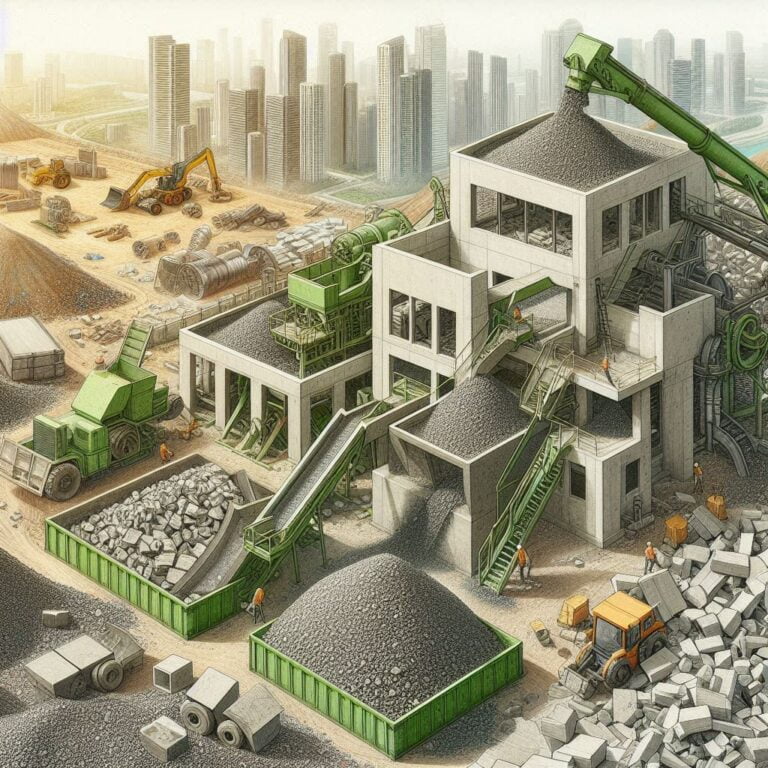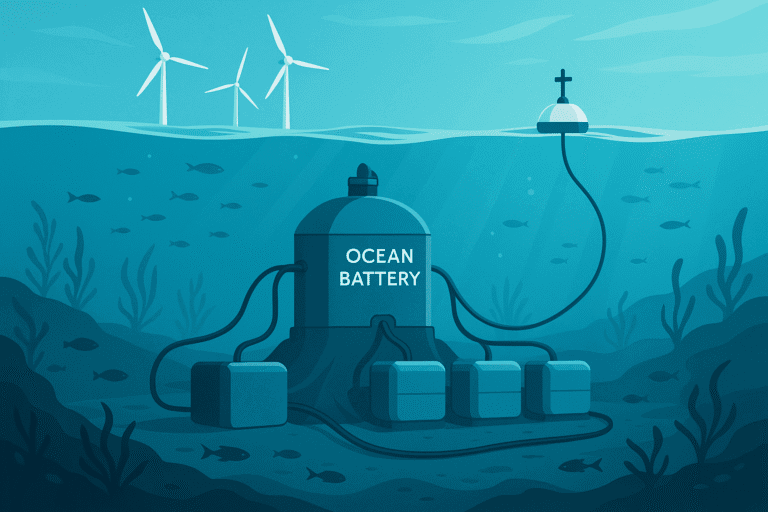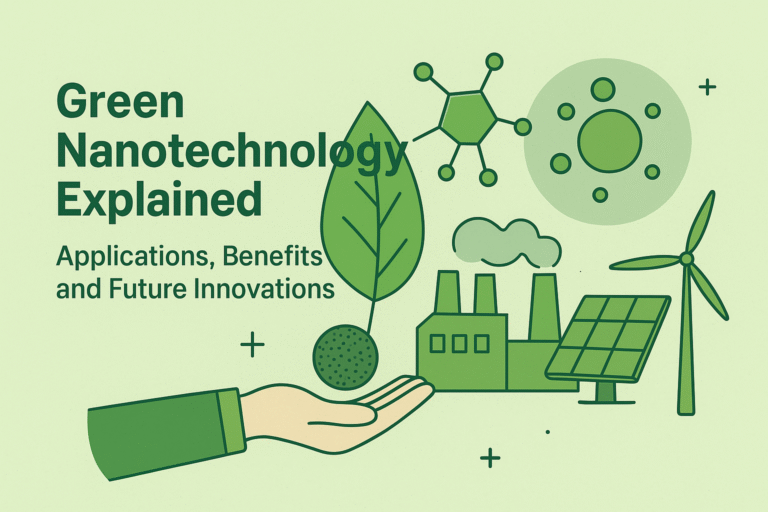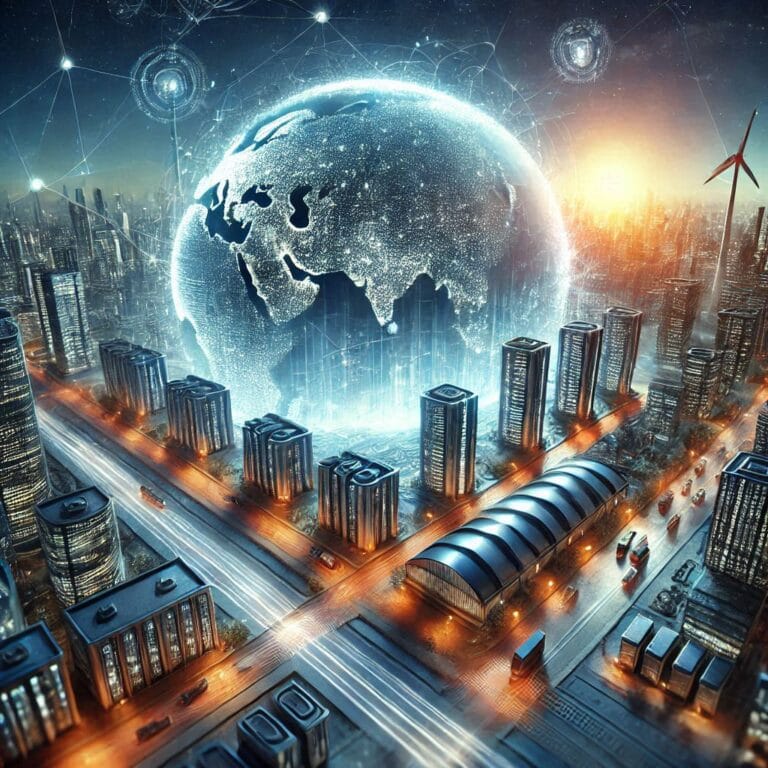Introduction- Hydrogen fuel cell-powered drones
In the rapidly evolving world of unmanned aerial vehicles (UAVs), hydrogen-powered UAVs are emerging as a transformative technology. These hydrogen drones offer extended flight times, robust payload capacities, and significant environmental benefits, setting a new standard in UAV capabilities. As industries continue to explore the potential of UAVs, hydrogen fuel cell technology is poised to become a key player in revolutionizing how drones are used across various sectors. This comprehensive guide explores the technology behind hydrogen-powered UAVs, their diverse applications, recent advancements, and future trends, providing valuable insights for enthusiasts and industry experts alike.
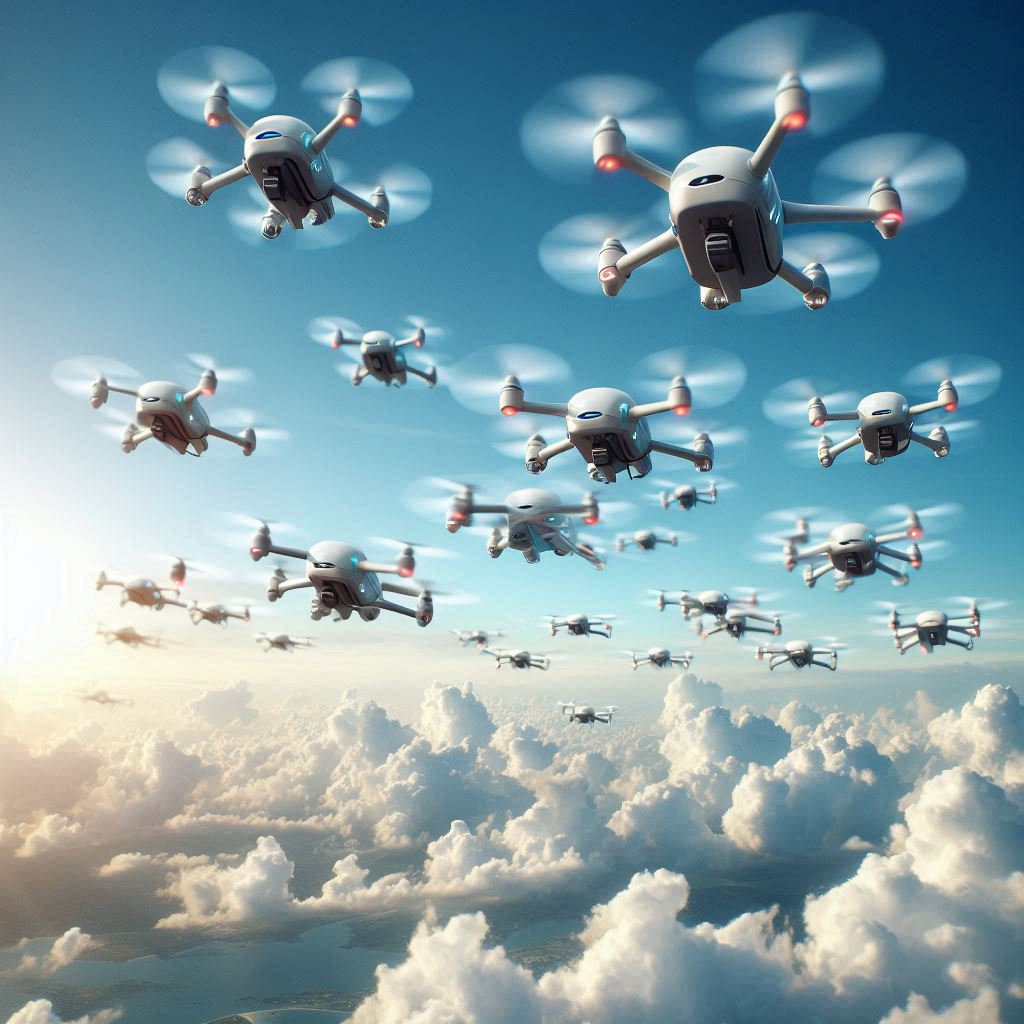
What Are Hydrogen-Powered Drones?
Understanding Hydrogen Fuel Cells
Hydrogen-powered UAVs operate using hydrogen fuel cells, which convert chemical energy into electrical energy to propel the UAV’s motors. This technology is not only innovative but also environmentally friendly, producing only water vapor as a byproduct. To better understand the significance of hydrogen fuel cells, let’s dive deeper into their functionality and advantages over traditional power sources.
How Do Hydrogen Fuel Cells Work?
Hydrogen fuel cells operate on a simple yet highly efficient electrochemical process:
- Electrochemical Reaction: Hydrogen molecules (H₂) are introduced into the anode side of the fuel cell. Here, the hydrogen atoms are split into protons and electrons through a process called electrolysis. The protons move through a specialized electrolyte membrane, while the electrons are forced to travel through an external circuit, creating an electric current that powers the UAV’s motors.
- Combining with Oxygen: On the cathode side of the fuel cell, oxygen (O₂) from the air combines with the protons and electrons to form water (H₂O) as a byproduct. This reaction not only produces electricity but also generates heat, which can be managed through various cooling systems integrated into the UAV’s design.
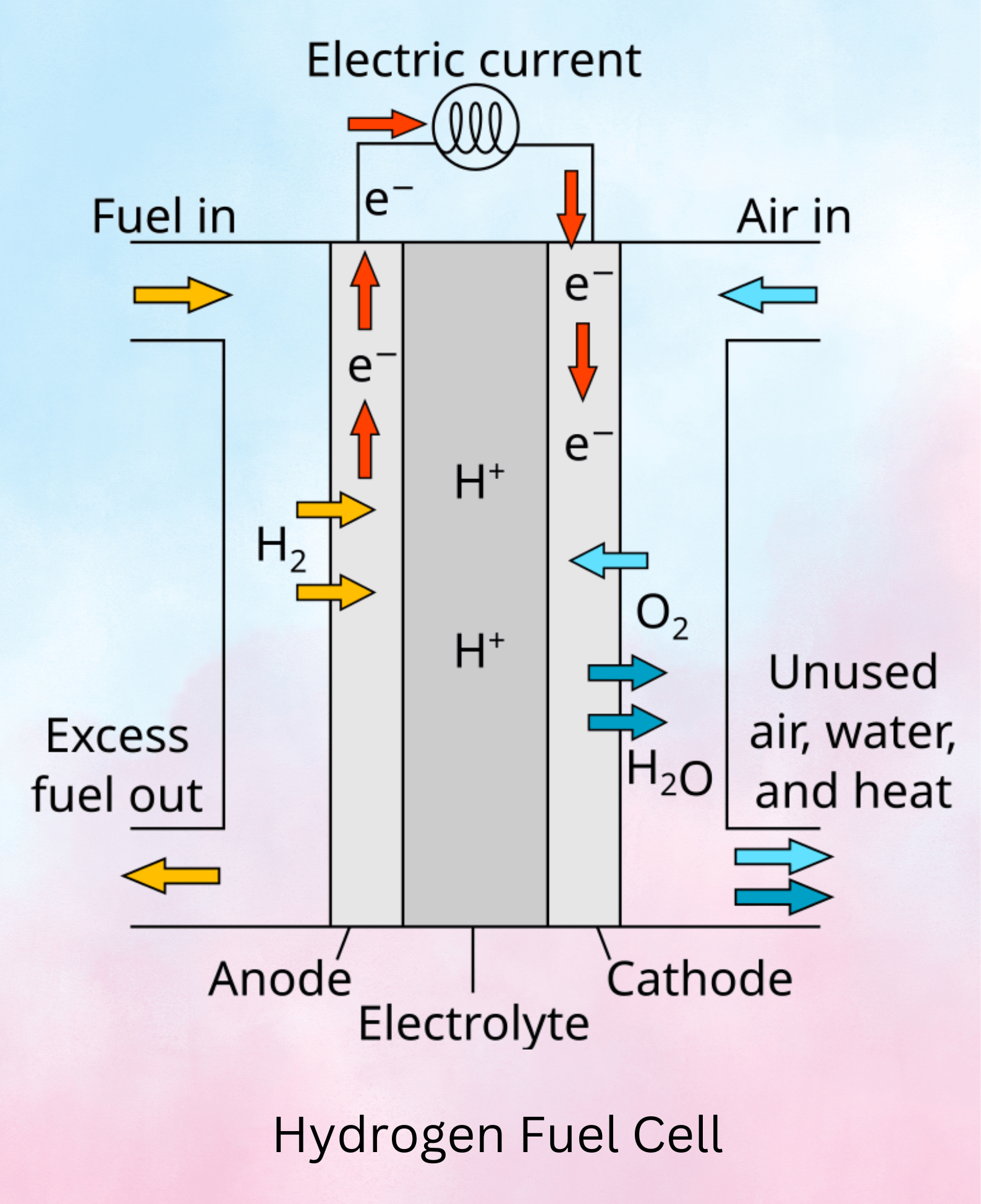
Comparison with Traditional Batteries:
- Energy Density: With comparison with lithium-ion batteries hydrogen fuel cells have a higher energy density, which means they can store more energy per unit of weight. This helps hydrogen-powered UAVs to operate for extended periods without needing to recharge.
- Environmental Impact: Traditional batteries, especially those containing lithium, have a significant environmental footprint, both in terms of production and disposal. In contrast, hydrogen fuel cells are much cleaner, producing only water vapor as a byproduct and reducing the carbon footprint of UAV operations.
- Refueling vs. Recharging: While battery-powered drones require lengthy recharging periods, hydrogen-powered UAVs can be refueled in a matter of minutes. This quick turnaround is crucial for industries that rely on continuous drone operations.
Advantages of Hydrogen-Powered UAVs
The advantages of hydrogen-powered UAVs are driving their adoption across various sectors. Let’s explore the benefits of hydrogen-powered UAVs in more detail:
Extended Flight Time:
-
- Operational Efficiency: Hydrogen fuel cell-powered drones can remain airborne for several hours, which is a significant improvement over the limited flight times of battery-powered drones. For example, a typical lithium-ion battery-powered drone might fly for 20-30 minutes, whereas hydrogen-powered models can achieve flight times of 2-8 hours, depending on the design and payload.
- Case Study: A 2023 study by the Massachusetts Institute of Technology (MIT) demonstrated that hydrogen fuel cells could extend UAV flight times by 300% compared to conventional batteries, highlighting the potential for these drones in long-duration missions.
Increased Payload Capacity:
-
- Power-to-Weight Ratio: The efficient power-to-weight ratio of hydrogen fuel cells allows UAVs to carry heavier payloads without compromising flight time. This makes them suitable for commercial and industrial applications where larger or heavier equipment must be transported.
- Real-World Application: In logistics, hydrogen-powered UAVs are already being tested for delivering medical supplies in remote areas, where their ability to carry significant payloads over long distances is proving invaluable.
Environmental Impact:
-
- Zero Emissions: Hydrogen fuel cell-powered drones produce zero harmful emissions, as their only byproduct is water vapor. This makes them an environmentally friendly alternative to battery- and fossil-fuel-powered UAVs.
- Sustainability Metrics: According to the International Renewable Energy Agency (IRENA), hydrogen has the potential to reduce the carbon footprint of the aviation sector by 10-20% by 2030 if widely adopted, emphasizing the importance of hydrogen-powered UAVs in the push for greener technologies.
Applications of Hydrogen-Powered Drones
Hydrogen-powered UAVs are transforming various industries, from logistics to agriculture, by offering unique capabilities that other power sources cannot match. Let’s delve into specific applications where these drones are making a significant impact:
Logistics and Supply Chain Management
Hydrogen-powered UAVs are revolutionizing the logistics industry, offering new solutions for transporting goods efficiently and sustainably:
- Efficient Deliveries: These hydrogen drones are particularly suited for last-mile deliveries, where their extended flight times and ability to carry substantial payloads can overcome the limitations of battery-powered drones. For instance, Intelligent Energy hydrogen drones can operate for up to 2 hours on a single fuel cell charge. This provides a sustainable solution for delivery companies looking to minimize their carbon footprint.
- Warehouse Management: In large warehouses, hydrogen-powered UAVs assist with inventory tracking and management. Their ability to fly for extended periods means they can cover vast areas without needing frequent refueling, significantly improving operational efficiency.

Case in Point: Amazon has been exploring hydrogen-powered UAVs for its delivery fleet, aiming to reduce delivery times and enhance sustainability. The potential to fly longer distances without recharging could make these drones a staple in the future of e-commerce logistics.
Agriculture
In agriculture, the use of hydrogen-powered UAVs is becoming increasingly popular due to their efficiency and precision:
- Enhanced Crop Monitoring: Hydrogen drones are capable of conducting detailed aerial surveys over large areas, providing farmers with valuable data on crop health, soil conditions, and potential issues like pest infestations. The ability to fly for longer periods allows these drones to monitor vast agricultural fields in a single flight, leading to more accurate and timely interventions.
- Precision Application: The precision with which hydrogen fuel cell-powered drones can apply fertilizers and pesticides is a game-changer for modern farming. By reducing the amount of chemicals needed and ensuring they are applied exactly where needed, these drones help farmers reduce costs and minimize environmental impact.
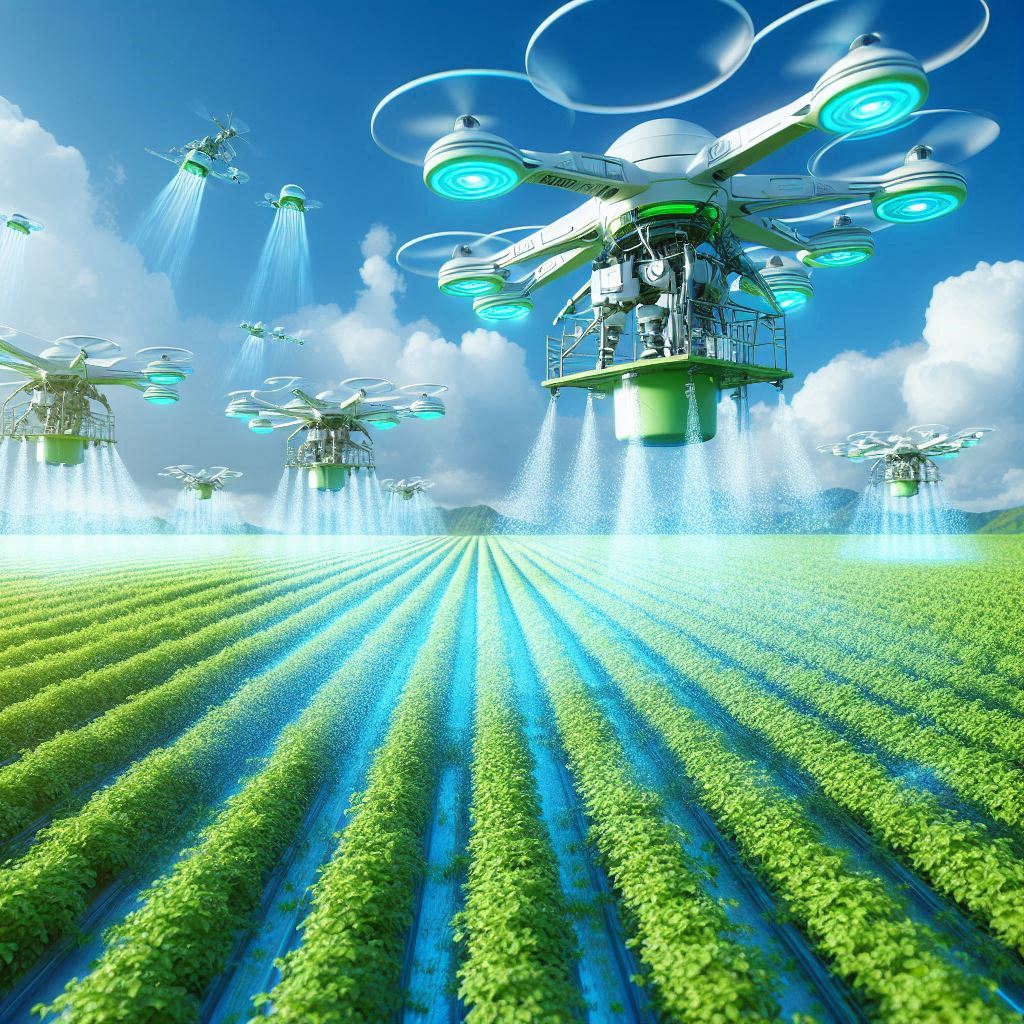
Data Insight: A 2022 study by the University of California, Davis found that using hydrogen-powered UAVs for precision agriculture could increase crop yields by up to 15% while reducing the use of pesticides by 20%, underscoring the potential economic and environmental benefits.
Infrastructure Monitoring
The extended flight times and robust capabilities of hydrogen fuel cell-powered drones make them ideal for inspecting and maintaining critical infrastructure:
- Power Line Inspections: The ability of hydrogen-powered UAVs to fly for hours without needing to refuel is particularly advantageous for inspecting power lines, pipelines, and other infrastructure that requires continuous monitoring. These drones can identify issues such as damage or wear that may require maintenance, thus preventing costly outages or accidents.
- Pipeline Surveillance: In the oil and gas industry, hydrogen-powered UAVs are being used to monitor pipelines for leaks or structural problems. Their extended flight capabilities allow for frequent and thorough inspections, improving the safety and reliability of these critical infrastructures.
Industry Impact: The American Society of Civil Engineers (ASCE) has highlighted hydrogen-powered UAVs as a critical tool for infrastructure monitoring, particularly in remote or difficult-to-access areas. The drones’ ability to operate for extended periods without human intervention is seen as a major advancement in infrastructure management.
Emergency Response and Disaster Management
Hydrogen-powered UAVs are proving to be invaluable tools in emergencies, where time and efficiency are of the essence:
- Search and Rescue Operations: In search and rescue missions, hydrogen-powered drones can cover large areas without the need for frequent refueling, making them more effective in locating missing persons or delivering supplies to those in need. Their high payload capacity also allows them to transport medical equipment, food, and water to disaster-stricken areas.
- Disaster Assessment: Following natural disasters, hydrogen drones provide real-time aerial views that are crucial for damage assessment and recovery planning. The ability to stay airborne for extended periods ensures that emergency responders have the most up-to-date information when making critical decisions.
Technological Integration: The integration of thermal imaging and LiDAR (Light Detection and Ranging) technology with hydrogen-powered UAVs is enhancing their effectiveness in emergency response, providing more detailed and accurate assessments of disaster areas.
Recent Advancements in Hydrogen-Powered Drone Technology
The field of hydrogen-powered UAV technology is rapidly advancing, with several key developments pushing the boundaries of what these drones can achieve:
Innovations by Leading Companies
Several companies are leading the charge in developing advanced hydrogen-powered UAVs, with notable achievements:
- Doosan and Intelligent Energy: These companies have made significant strides in hydrogen fuel cell technology for UAVs. For instance, Intelligent Energy hydrogen drones now boast flight times of up to 2 hours on a single charge, with applications ranging from environmental monitoring to military operations. These drones are equipped with autonomous mission planning capabilities, making them versatile tools for various sectors.
- Heven Drones: Known for their high-performance hydrogen-powered drones, Heven Drones’ latest models offer flight times of up to 8 hours and can carry payloads of up to 10 kilograms. This makes them particularly useful in logistics and agriculture, where long flight times and heavy payloads are essential.
Market Trends: According to a 2023 report by Market Research Future, the global market for hydrogen fuel cell UAVs is expected to grow at a compound annual growth rate (CAGR) of 20% over the next decade, driven by advancements in fuel cell technology and increasing demand for sustainable UAV solutions.
Technological Enhancements
Recent advancements in fuel cell technology have led to several key improvements that are enhancing the capabilities of hydrogen-powered UAVs:
- Increased Energy Density: Innovations in fuel cell design have resulted in higher energy density, allowing UAVs to generate more power from smaller amounts of hydrogen. This has led to longer flight times and better overall performance, making hydrogen-powered UAVs more practical for extended operations.
- Reduced Weight: Advances in materials science have led to lighter fuel cells, reducing the overall weight of the UAV and enhancing its flight capabilities. This is particularly important for drones that need to carry heavy payloads or operate in challenging environments.
- Improved Hydrogen Storage: New developments in hydrogen storage technology have made it easier and safer to transport and store hydrogen. This addresses one of the key challenges associated with hydrogen-powered UAVs and opens up new possibilities for their deployment in various sectors.
Safety Considerations: The development of safer hydrogen storage solutions is critical for the widespread adoption of hydrogen-powered UAVs. Recent advancements in this area are helping to mitigate the risks associated with hydrogen fuel, making these drones a more viable option for commercial use.
Future Trends and Predictions
The future of hydrogen-powered UAVs is bright, with several key trends and predictions shaping the industry’s trajectory:
1. Technological Advancements
The continued advancement of hydrogen-powered drone technology is expected to lead to several key developments:
- Enhanced Efficiency: As fuel cell technology continues to improve, hydrogen-powered UAVs will see even longer flight times and greater payload capacities. This will make them more competitive with other types of drones and expand their applications across various industries.
- Integration with AI: The integration of artificial intelligence (AI) and machine learning with hydrogen-powered UAVs will enable more sophisticated autonomous operations. AI-powered drones will be able to analyze data in real-time, make decisions on the fly, and adapt to changing conditions, making them more effective and reliable.
Industry Outlook: A report by the International Drone Federation predicts that AI-integrated hydrogen-powered UAVs will become the standard in industries such as agriculture, logistics, and emergency response by 2035, thanks to their efficiency and versatility.
2. Market Growth
The market for hydrogen fuel cell-powered drones is expected to grow substantially over the next decade:
- Increased Investment: Ongoing investments in research and development are driving innovation in hydrogen-powered UAV technology. As costs decrease and technology improves, these drones will become more accessible to a wider range of applications, from commercial to recreational use.
- Expansion into New Sectors: As the technology matures, hydrogen-powered UAVs are likely to find new applications in sectors such as environmental monitoring, surveying, and defense. The versatility and capabilities of these drones will open up new opportunities for their use in various fields.
Market Dynamics: The global market for hydrogen-powered UAVs is projected to reach $3 billion by 2030, driven by increased demand for sustainable and efficient drone solutions. This growth is expected to be particularly strong in Asia-Pacific, where governments and private companies are investing heavily in UAV technology.
Conclusion
Hydrogen-powered UAVs are at the cutting edge of drone technology, offering extended flight times, high payload capacities, and significant environmental benefits. As advancements in hydrogen fuel cell technology continue, these drones are set to play a pivotal role in industries such as logistics, agriculture, infrastructure monitoring, and emergency response. By staying informed about the latest innovations and understanding the diverse applications of hydrogen-powered UAVs, industry professionals and enthusiasts can fully appreciate the potential of this transformative technology. With continued investment and technological progress, hydrogen-powered drones are poised to lead the next frontier in UAV innovation.
Don’t Miss Out on Our Latest Posts!

